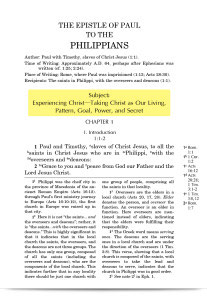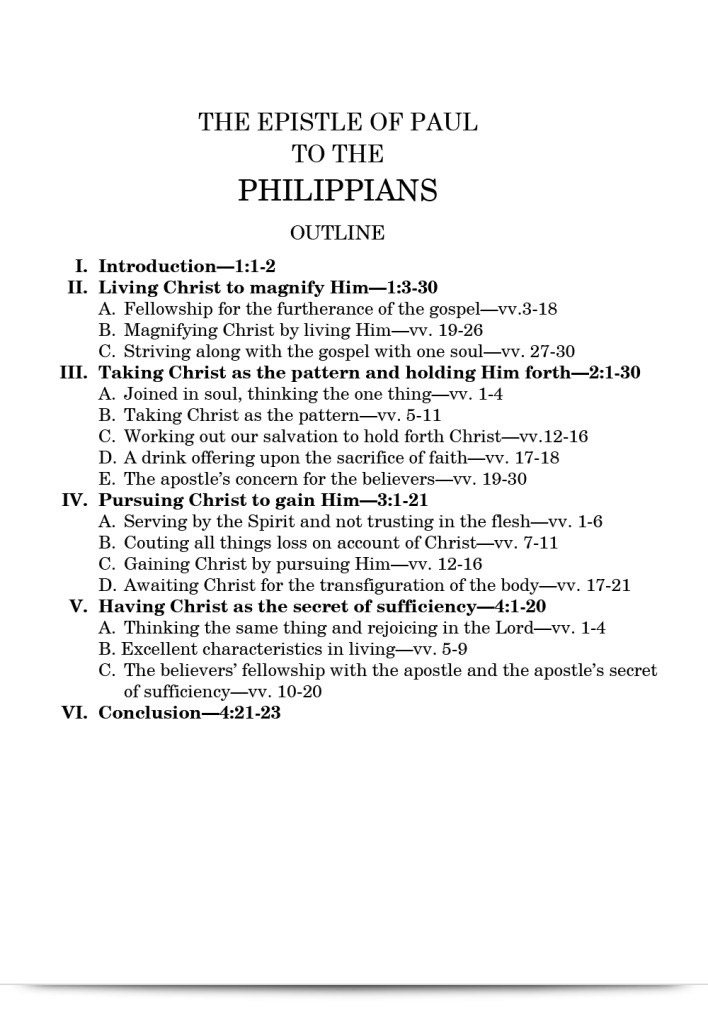How easy a translation is to read is very important, but not at the cost of its accuracy to the original language. The Recovery Version, published by Living Stream Ministry, is both readable and accurate.
The Bible text in the Recovery Version is easy to read and understand because it is composed in modern English. Instead of struggling to understand the archaic language used in some older classical translations, you will readily appreciate the easy-to-read language of the Recovery Version.
At the same time, the Recovery Version is a trustworthy, accurate translation from the original Greek, the result of extensive research into the meaning of the text. Rather than paraphrasing, as with some translations, the Recovery Version translates the original meaning of the Greek, taking into account centuries of Bible scholarship as well as the larger context of the chapter, book, and similar portions of the New Testament. You’ll welcome the trustworthiness of the translation and its faithfulness to the proper understanding of the divine revelation in the holy Word.
The New Testament Recovery Version mostly follows the Nestle-Aland Greek text as found in the Novum Testamentum Graece (26th edition).
For a detailed introduction, please read “A Brief Explanation” on the publisher’s website. This preface also appears at the front of the New Testament Recovery Version.
While reading the Bible, do you ever end up frustrated by not understanding what’s being said? Then you’ll appreciate the footnotes in the New Testament Recovery Version.
One of the striking features of the New Testament Recovery Version is its vast number of explanatory footnotes (over 9,000), which help you understand the verses in the Bible. As you read, you find yourself entering into an understanding of the Word of God in a way you never thought possible.
The Recovery Version footnotes supply you with spiritual nourishment by focusing on the light in the truth of God’s Word.
Let’s say you started your Bible reading from the first page of the New Testament, Matthew 1:1: “The book of the generation of Jesus Christ, the son of David, the son of Abraham.” Perhaps you felt lost as you continued to read through the first seventeen verses, full of unfamiliar names from the Old Testament. You might have even wondered why these verses are in the Bible.
With the help of the rich explanation in the footnotes for Matthew 1:1, the recorded genealogy of Christ is no longer a seemingly dry listing of who begot whom. Click here to read the first footnote.
Going further into Matthew 1, here’s just one example of how the footnotes help you understand the genealogy of Jesus Christ by, as note 1 above says, tracing “the origin and history of every incident.”
Matthew 1:5 says, “And Salmon begot Boaz of Rahab, and Boaz begot Obed of Ruth, and Obed begot Jesse.”
Who are these people? Why is this verse here in the Bible? With the help of this footnote on Rahab, we gain an appreciation of the genealogy of Jesus Christ that we never had before. Instead of wondering why this verse is here, we thank God that it is!
The footnotes, as you can see, not only help our understanding of the verses in the Bible but also reveal Christ to us and nourish us by ministering to us the life supply from the Word.
The New Testament Recovery Version includes more than 13,000 cross-references, which you will find helpful in your study of the Bible. You can follow these cross-references to read other verses in the Bible with the same expressions and facts. The cross-references also lead you to other matters related to the spiritual revelation in the divine Word.
To understand a book, it really helps to know what the subject of the book is and to have an overview of the whole book. The New Testament Recovery Version provides both a subject and an outline for every book. These give you the spiritual meaning in each book.
The subject of each of the twenty-seven New Testament books is succinctly stated on the first page of the book. The subject statement helps you understand what the book as a whole is about.
For example, maybe you’ve wondered what the book of Philippians is about? You can get help by reading the subject statement for Philippians:

An outline at the beginning of each book presents an in-depth overview of the entire book, delineating the major sections of the book. These outlines give you a bird’s-eye view of every book.
For example, the outline for Philippians gives us a bird’s-eye view of the book by outlining the six major sections of the book:

Each of these major sections also includes detailed sub points.
Besides appearing at the beginning of each book, the outlines also appear within the text of the book, so you’re never far away from seeing which section you’re in.